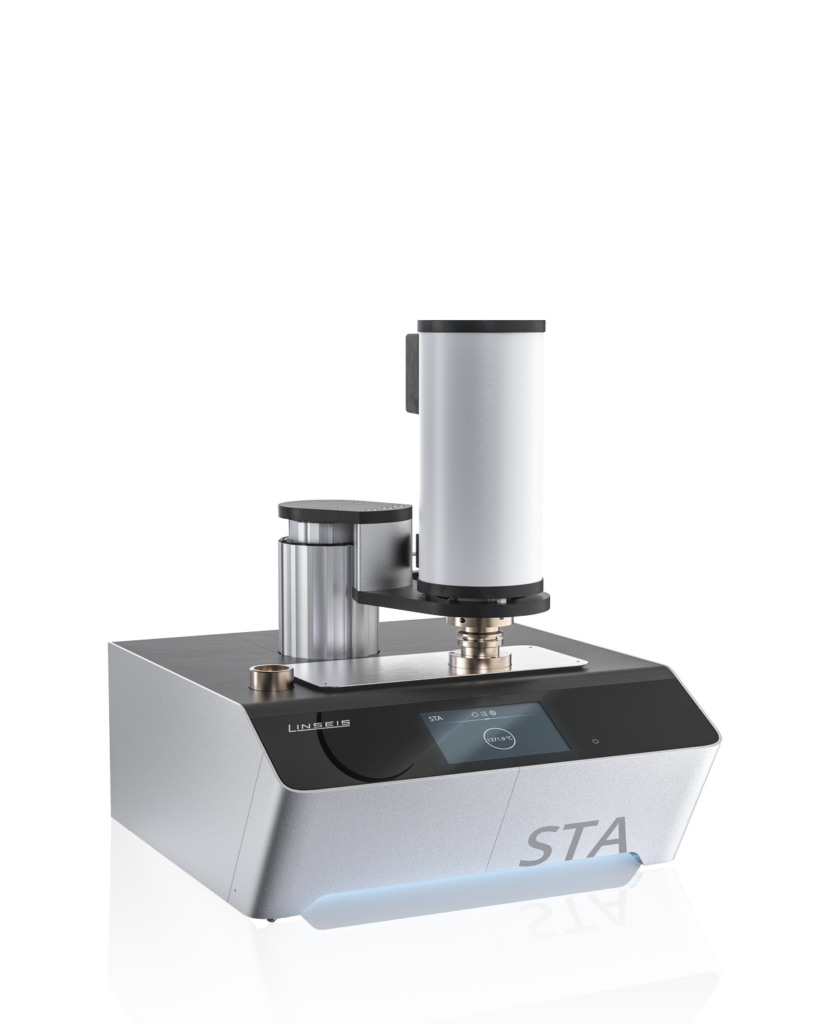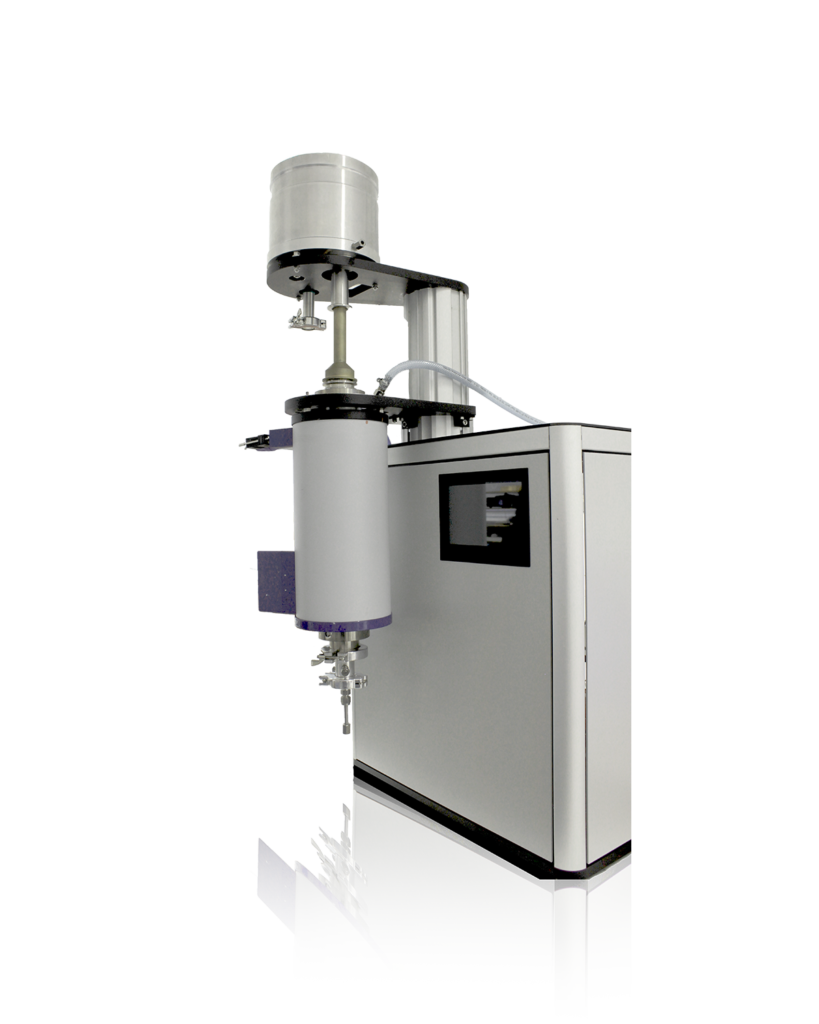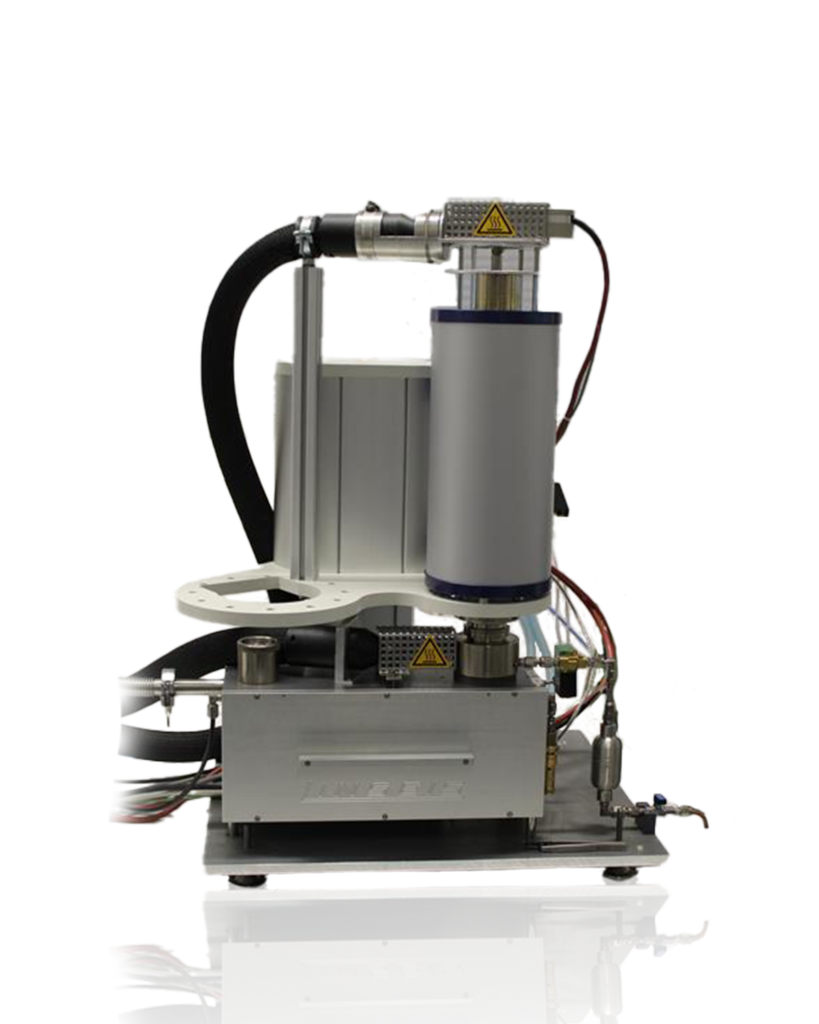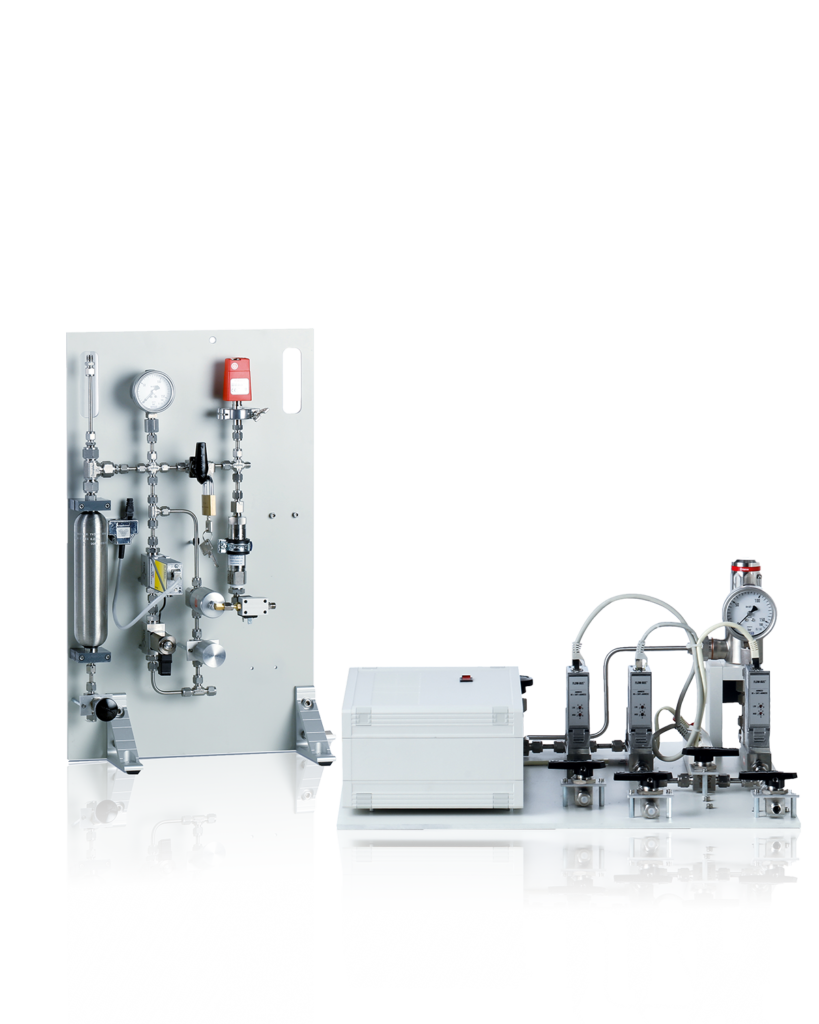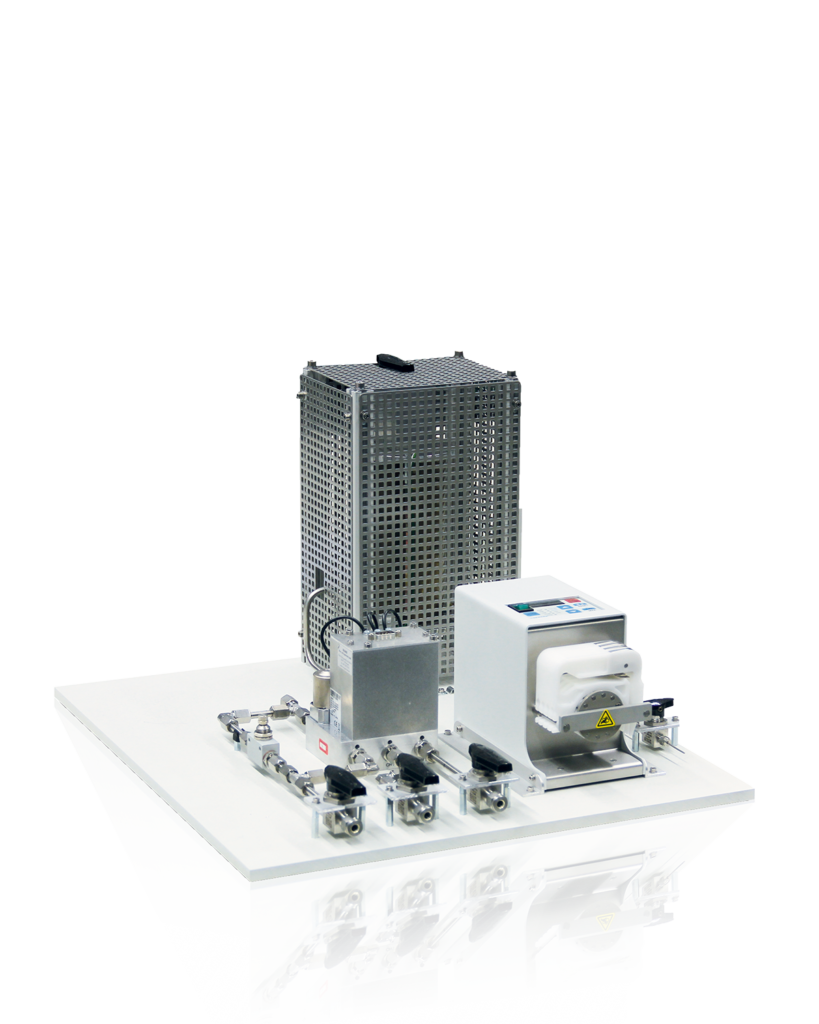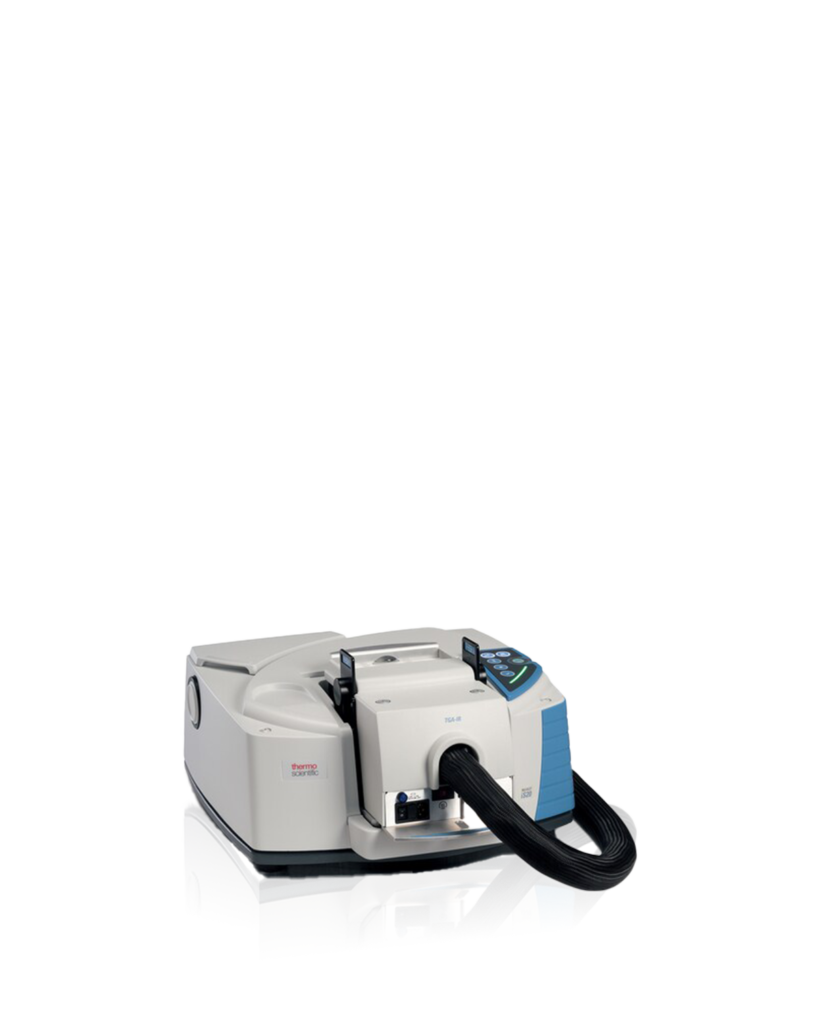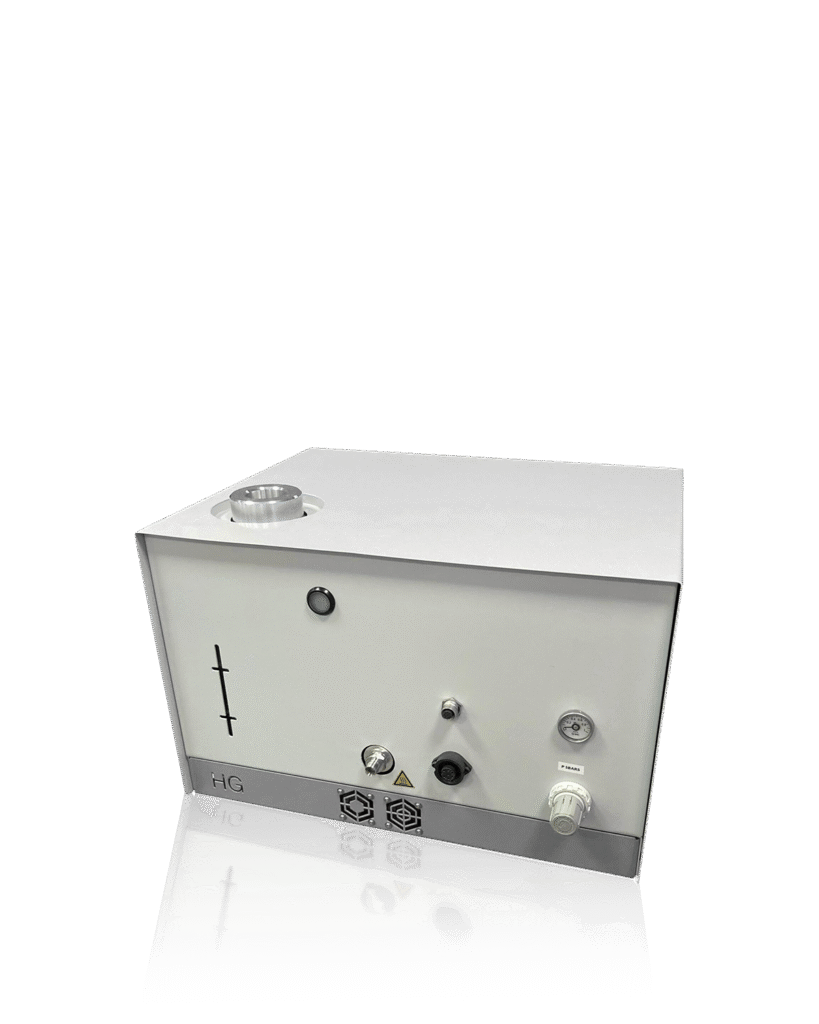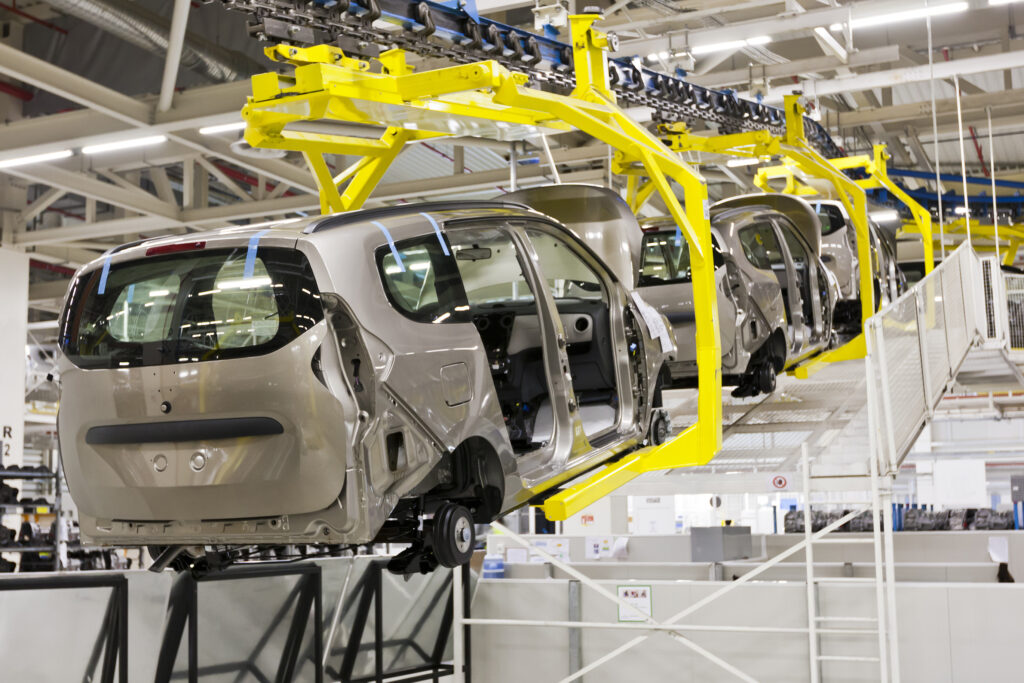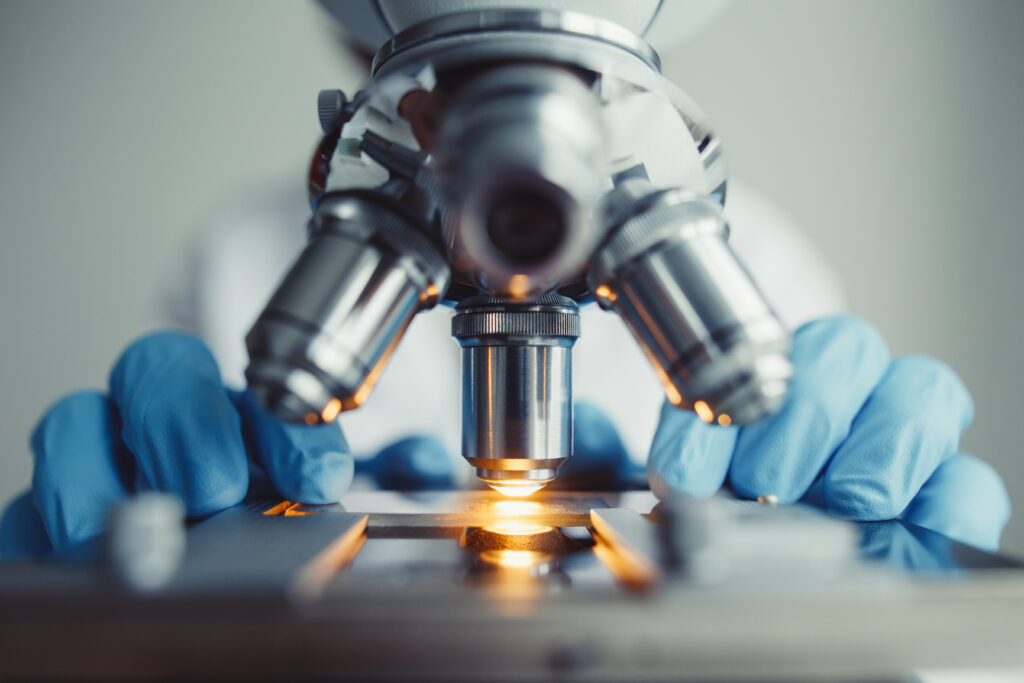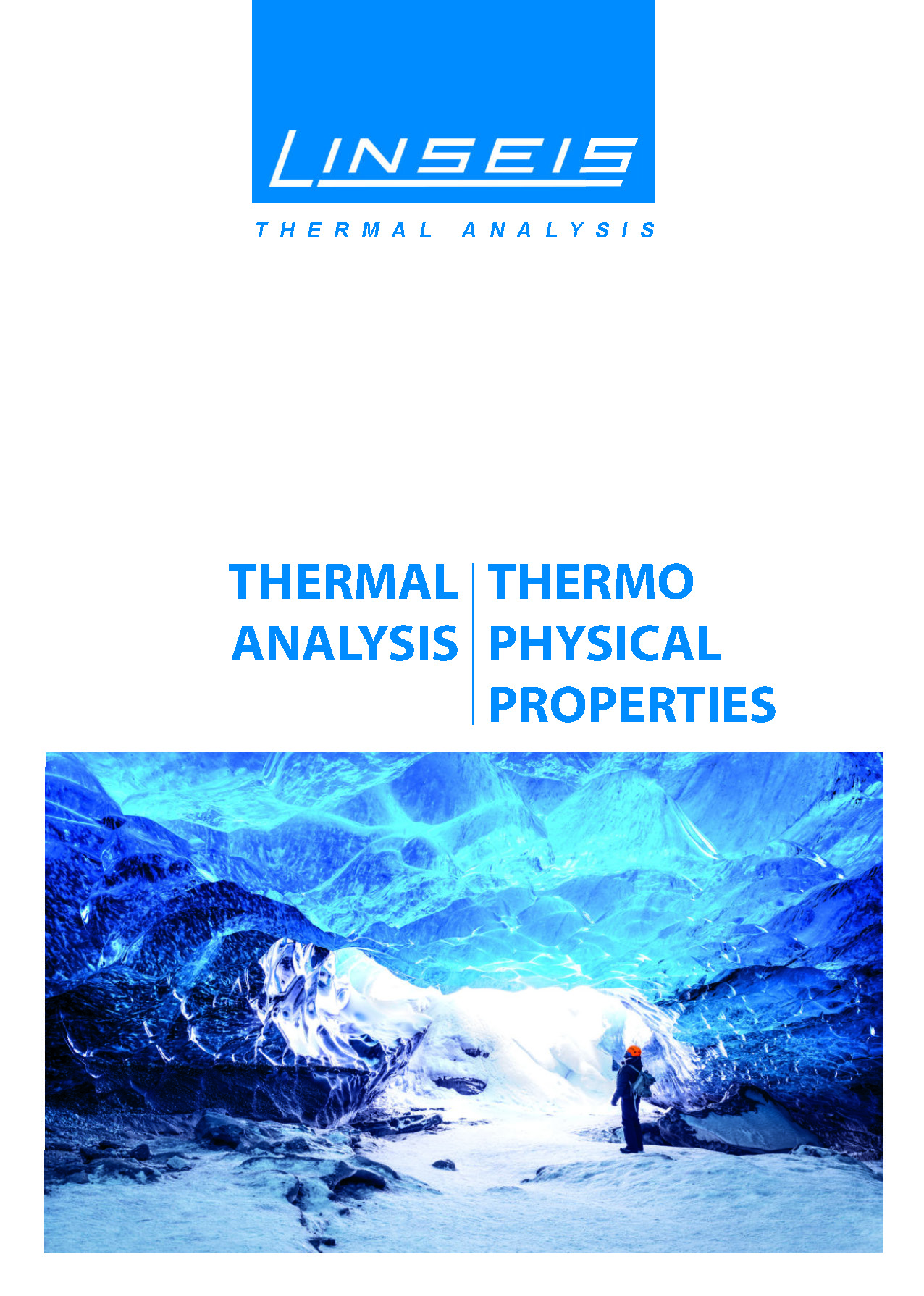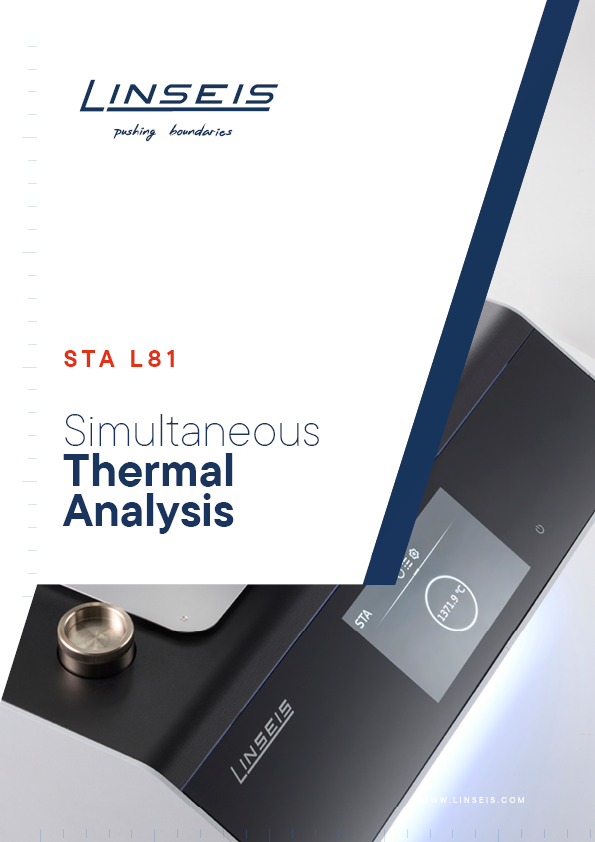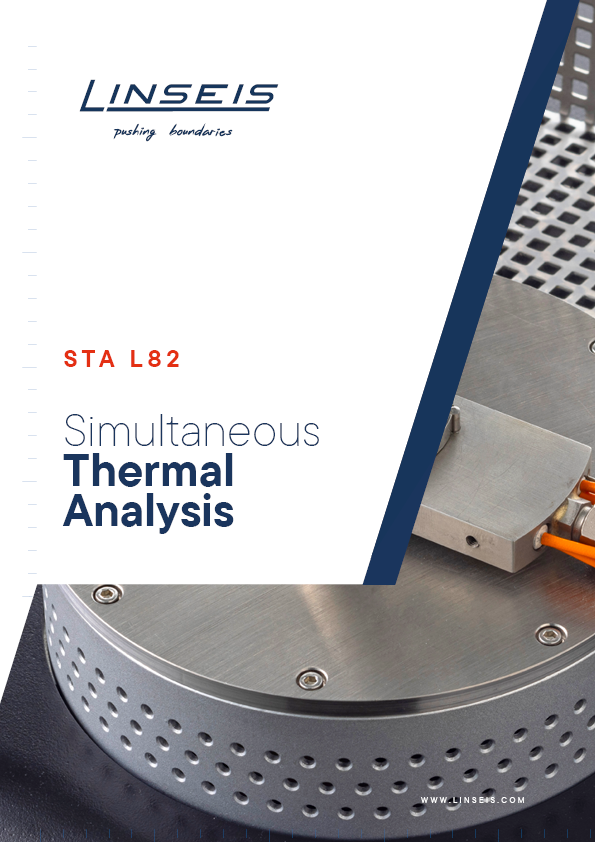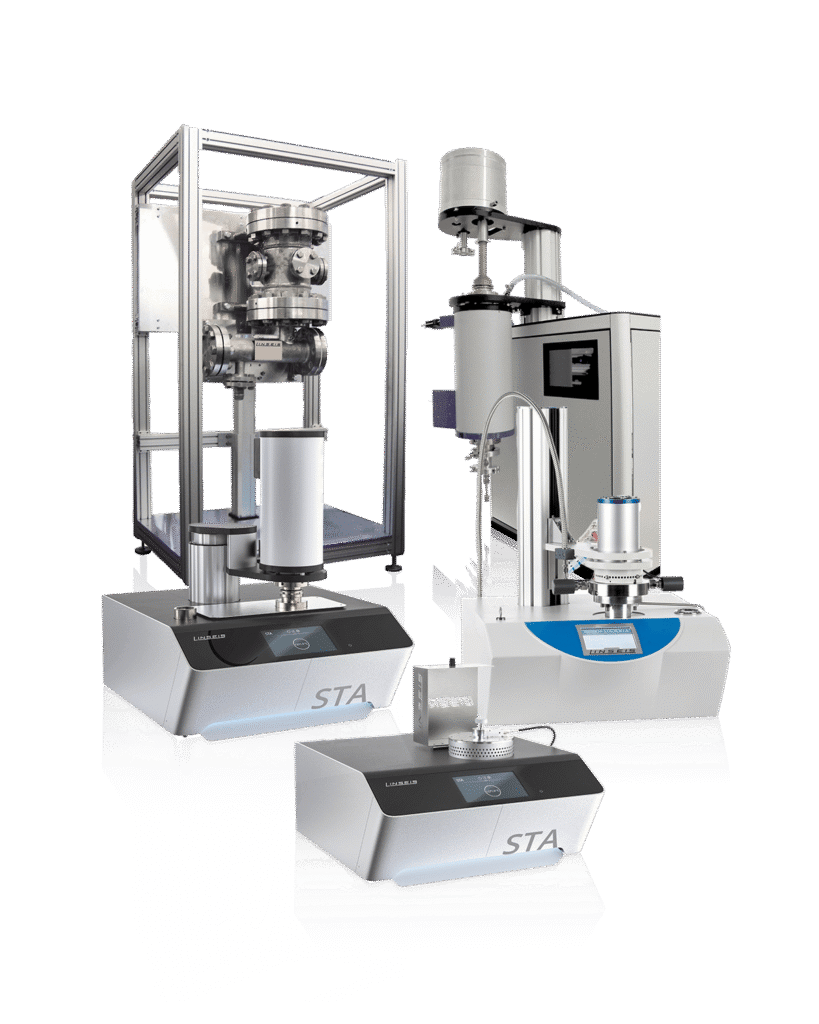
STA -
Simultaneous
Thermal
analysis
STA - Thermogravimetry and differential scanning calorimetry for comprehensive material characterization
The simultaneous measurement of mass change (thermogravimetry /TG) and energy conversion (Differential Scanning Calorimetry / DSC) on a single sample (Simultaneous Thermal Analysis – STA) offers a considerable information advantage over separate measurements in different devices.
The models of the Linseis STA series were developed to simultaneously measure mass changes (TG) and caloric reactions (DSC) of a sample in the temperature range from -150 °C to +2400 °C. They combine the highest precision, maximum resolution and long-term drift stability – even under the most demanding conditions.
Our modular system design includes various furnace types as well as a wide range of sample holders and crucibles, complemented by extensive accessories such as gas mixing systems, gas analyzers and gas safety systems as well as our powerful LiEAP software.
In our brochures you will find an overview of all models. We would also be happy to advise you individually to find the optimum system for your measuring tasks.
Our top STA systems for maximum precision
All STA systems at a glance
The Simultaneous Thermal Analysis (STA) combines thermogravimetry (TGA) and dynamic Differential Scanning Calorimetry (DSC) in one measuring system and thus enables the simultaneous recording of mass changes and heat flows on the same sample under identical conditions.
This method provides precise and comprehensive information on thermal stability, phase transitions, oxidation and reduction reactions and decomposition processes. decomposition processes.
Developed and produced since 1957 Linseis has been developing high-precision systems for thermal analysis. The STA devices combine maximum sensitivity and stability with a wide temperature range from -150 °C to 2400 °C and offer researchers and quality laboratories a reliable platform for the comprehensive comprehensive characterization of a wide range of materials – from polymers and metals to ceramics and composites.
Measured variables and applications:
Determination of the thermal stability
Determination of the glass transition (Tg)
Decomposition and combustion
Quantitative composition analysis
Reaction kinetics
Safety and stability analyses
Heat flow – Differential scanning calorimetry (DSC)
$$\dot{q} = C_p \cdot \frac{dT}{dt}$$
𝑞̇ – heat flow
Cₚ – specific heat capacity
dT/dt – heating rate
Mass change – thermogravimetry (TGA)
$$\frac{\Delta m}{m_0} = \frac{m(T) – m_0}{m_0} \times 100\,\%$$
Δm – mass change
m(T) – mass at temperature T
m₀ – initial mass
Calculation of thermal effects in the STA
Simultaneous thermal analysis (STA) combines thermogravimetry (TGA) and differential scanning calorimetry (DSC) in a single measuring system.
In this process, mass changes and heat flows are recorded simultaneously on the same sample in order to comprehensively characterize thermal processes.
The DSC equation describes the relationship between heat flow, specific heat capacity and heating rate.
It can be used to precisely quantify endothermic and exothermic processes such as melting, crystallization or glass transitions.
The TGA equation shows the relative mass change of a sample as a function of temperature or time.
It is used to investigate decomposition, oxidation, evaporation and reduction processes and provides valuable information about the thermal stability and composition of materials.
System configurations and measurement environments
The devices in the STA series from Linseis are modular in design and can be flexibly adapted to a wide range of applications.
Depending on the measuring task, different oven types can be oven types can be used – from low-temperature furnaces to high-temperature systems with measuring ranges from -150 °C to 2400 °C. This flexibility enables precise analysis of both organic and inorganic materials.
In addition, there are various atmosphere options are available: Measurements can be performed under inert, oxidizing, reducing or vacuumed environments. environment. Precise gas control guarantees reproducible conditions and a stable baseline over the entire temperature range.
Optionally available high-resolution sensors and differential weighing technology ensure particularly sensitive detection of even the smallest changes in mass. In combination with the excellent temperature stability of Linseis furnace technology, this ensures maximum measuring accuracy and repeatability. is achieved.

Measurement possible

Measurement possibly possible

Measurement not possible
| Measured variable/application | STA L81 | STA L81 Nuclear | STA L82 | STA L84 HP | STA L85 HP | STA/TGA L86 |
|---|---|---|---|---|---|---|
| Phase transitions/melting points |  |
|||||
| Oxidation/reduction reactions | ||||||
| Decomposition/combustion | ||||||
| Reaction kinetics |  |
|||||
| Reaction enthalpies (endo/exo) |  |
|||||
| Water/moisture determination | ||||||
| Reactive gas atmosphere (hydrogen/corrosive gases) |  |
|||||
| Measurements under elevated pressure (> 5 bar) |  |
|||||
| Coupling with gas analysis (MS/FTIR) |  |
Extensions

To maximize the performance of the dilatometers, various add-ons and expansion modules are available. add-ons and extension modules are available. They make it possible to adapt the measuring system to specific applications, materials or process conditions.
Through additional gas controls defined atmospheres such as air, vacuum or inert gas can be precisely set – ideal for oxidation-sensitive or reactive samples.
Force sensors and load units extend the measurement to include thermomechanical parameters such as pressure or deformation behavior.
With optical or laser-based extensions can be used to record changes in length without contact and with high resolution.
Additional add-ons such as automatic sample changers, safety and calibration devices or software modules for data analysis increase the efficiency, safety and reproducibility of measurements.
This means that Linseis dilatometers can be individually configured – for maximum flexibility in research, development and quality assurance.
Are you interested in a STA measuring device ?
Would you like to carry out a
sample measurement?
Contact us today!

Your benefits - Unique features of Linseis STA systems
Linseis has been one of the technological pioneers in thermal analysis for decades.
Our STA systems combine maximum precision, modular flexibility and superior sensor and furnace technology – for reliable, reproducible results in research, development and quality assurance.
1. user-changeable sensor technology
The modular sensor system allows the interchangeable use of TG, DSC and DTA sensors directly – directly by the user, without the need for servicing.
This allows measurement tasks to be flexibly adapted, maintenance times to be minimized and costs to be reduced – a clear advantage over permanently installed sensors from other suppliers.
2. widest temperature range in its class
With several oven types from -150 °C to +2400 °C, Linseis offers the widest largest covered temperature range on the market.
Combinable low-temperature, high-temperature and special furnaces enable precise analysis of a wide range of materials – from polymers and ceramics to metals.
3. superior measurement accuracy thanks to protected sensor architecture
The patented Tri-Couple and Calvet sensor technology delivers exceptional signal stability and temperature homogeneity across the entire measurement range.
This enables Linseis to achieve a higher DSC sensitivity and lower drift than competitor models – especially for long-term and high-temperature measurements.
4. vacuum and high pressure options up to 150 bar
The STA models from Linseis can be operated under controlled vacuum (up to 10-⁵ mbar) or under overpressure conditions up to 150 bar
This opens up additional possibilities for sorption tests, reaction kinetics or process simulations under real conditions.
Why Linseis - The difference in simultaneous thermal analysis

Long-term Investment with added value
At Linseis, the focus is not only on precision, but also on sustainable added value over the entire life cycle.
Our systems offer the lowest operating costs in their class – thanks to durable, low-maintenance components, robust design and intelligent software maintenance.
Fewer service calls, shorter downtimes and continuous remote updates ensure maximum system availability and future-proofing – for decades to come.

Customized Solutions – flexibility as standard
Every measuring task is unique – that’s why Linseis does not manufacture standard devices, but tailor-made systems, precisely tailored to your application.
Whether special furnace, special sensor technology, extended temperature range or customer-specific software integration – our experienced engineering team develops solutions that perfectly match your requirements.
With our modular product architecture, individualization becomes standard – fast, precise and reliable.

Technological pioneers and innovative strength since 1957
Linseis has been a technological pioneer in thermal analysis for over six decades.
With the highest in-house production rate in the industry and an excellent R&D department, systems are created that set new standards in precision, stability and adaptability.
From the mechanical structure to the electronics to the software, every core system element is developed in-house – for technologically perfect and uncompromisingly precise measurement technology “Made in Germany”.

Software expertise at the highest level
With the new LiEAP software suite, Linseis is redefining the standard in thermal analysis.
Modular in design, intuitive to use and equipped with state-of-the-art evaluation and remote functions, it ensures maximum efficiency, transparency and control at every step of the process.
Areas of application for simultaneous thermal analysis
Frequently asked questions about simultaneous thermal analysis
How a beam balance works
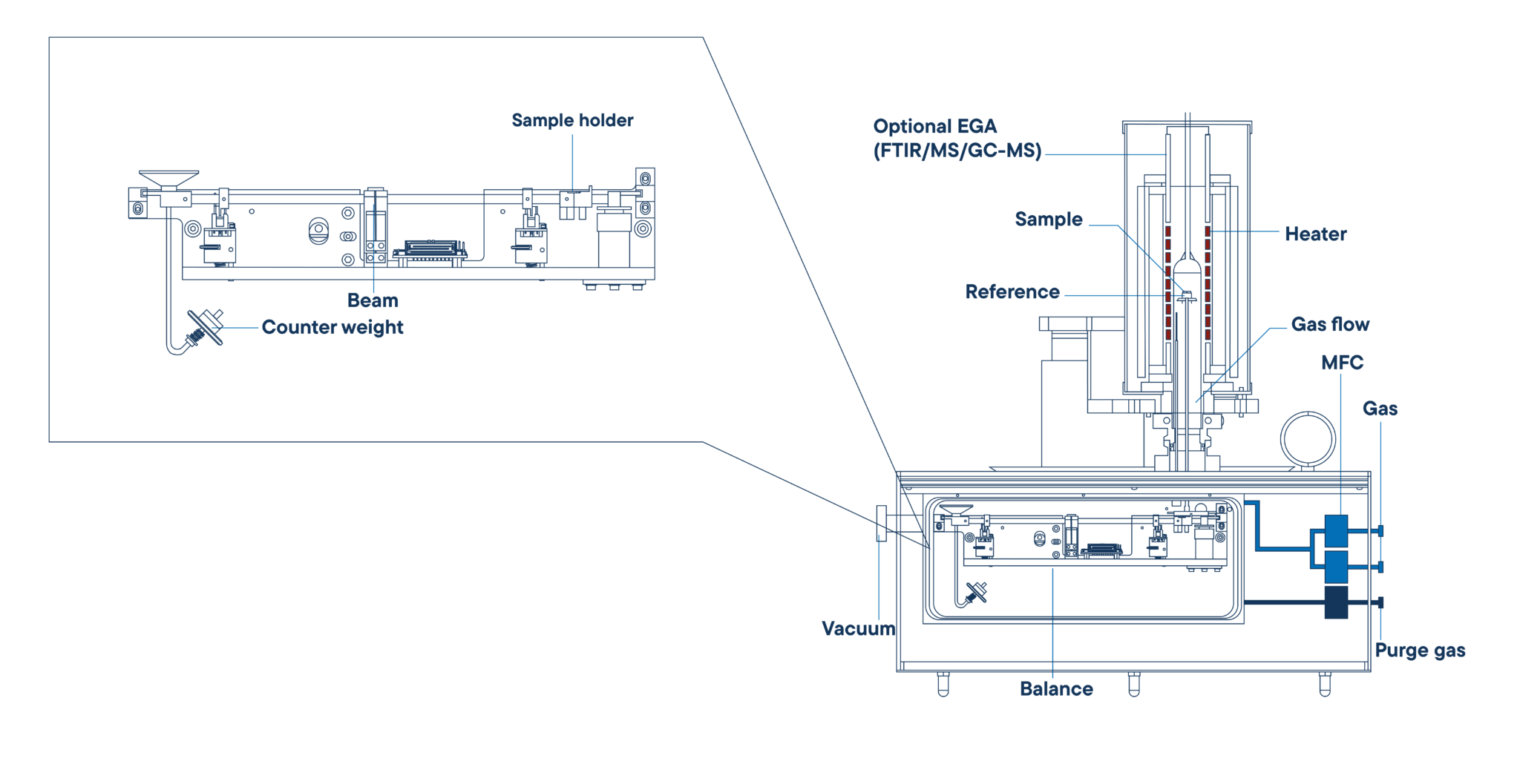
How does the forced flow principle work?
The patented forced flow principle offers considerable advantages when investigating gas-solid reactions. Precise control of the reaction environment allows reproducible measurement conditions to be achieved, while the continuous gas flow significantly accelerates slow reactions and ensures uniform mixing of the reactants. This leads to improved reaction kinetics and a more reliable interpretation of complex processes. At the same time, the forced flow principle enables
For which applications are simultaneous TG-DSC/DTA measurements advantageous compared to separate devices (TGA and DSC)?
The simultaneous TG-DSC/DTA measurement with the STA L81 makes it possible to record weight changes and thermal effects under exactly identical conditions on the same sample material. This avoids deviations that can occur with separate measurements due to differences in sample geometry, heating rate or atmosphere.
This is particularly advantageous for complex, multi-stage reactions or overlapping processes – for example when a mass loss (TG) and a thermal event (DSC/DTA) coincide in time. The direct correlation of both signals allows a more precise interpretation, such as distinguishing whether a thermal effect is accompanied by a mass change or not.
This simultaneous procedure also saves time, as only one measurement is necessary, and reduces sample consumption, which is particularly advantageous for rare or expensive materials.
Can pressure-dependent measurements also be carried out with STA devices?
Yes, with the right configuration, the STA systems from Linseis can also perform pressure-dependent measurements. Special high-pressure ovens, reinforced sensor units and precise gas control modules are available for this purpose, enabling safe and stable operation under increased pressure.
These extensions are particularly suitable for realistic process simulations, for example in materials research, catalysis development or safety-relevant reaction studies.
We recommend a brief consultation for an optimal design. We will be happy to help you define the right equipment and suitable pressure range for your specific application.
Are measurements under hydrogen and water vapor atmospheres possible with STA devices?
Yes, the STA systems from Linseis can – with the appropriate equipment – be operated in both hydrogen and water vapor atmospheres. For measurements in hydrogen, safety-tested gas modules, suitable high-temperature furnaces and monitoring equipment are available to ensure controlled and safe operation.
Water vapour atmospheres can be created using humidification systems, heated gas lines and temperature-stabilized gas supply lines. This configuration prevents condensation and ensures stable, reproducible measuring conditions across the entire temperature range.
Such atmosphere options are particularly relevant for applications in materials development, corrosion research, catalysis and energy and fuel technology.
Can STA devices be coupled with gas analyzers and is in-situ gas analysis possible?
Yes, the STA systems from Linseis can be coupled with various gas analyzers such as FTIR, MS or GC systems. This enables in-situ analysis of the gases released during the measurement. Coupling takes place via heated transfer lines, which ensure condensation-free gas flow and enable precise time alignment between thermal events and the gas composition.
This combination creates significant added value as it reveals not only the thermal and mass-related changes in the sample, but also the chemical identity of the gases produced or released. This is ideal for material characterization, decomposition and pyrolysis studies, reaction mechanisms and sophisticated R&D applications.
What are the advantages of the scale design of LINSEIS STA devices - and why is the combination of TG and DSC in one system so efficient?
The balance design of the LINSEIS STA systems is based on a compensated measuring principle in which a counterweight balances the sample mass. This increases sensitivity, thermal and gravimetric influences are minimized and even the smallest changes in mass can be reliably recorded. The symmetrical design reduces disturbances caused by vibrations and interference, while the construction remains insensitive to local gravity, temperature fluctuations and environmental influences. The result is the highest possible precision, combined with a maintenance-friendly system that – depending on the model – can process sample masses from mg to 50 g.
The simultaneous combination of TG and DSC in one device offers additional advantages: Sample and reference are in identical geometry, under the same temperature profile, the same atmosphere and identical humidity. This results in comparable and consistent measurement conditions, which significantly increase both the validity and reproducibility.
What does the DSC heat flow method measure and how are thermal effects in the sample evaluated?
The DSC heat flow method measures the energy difference between a sample and a reference material while both follow a defined temperature program. This energy input is displayed as a differential signal. Thermal effects such as melting, crystallization, reactions or decomposition appear as characteristic peaks.
The peak area corresponds to the converted enthalpy, while the peak direction indicates whether the process is endothermic (downward) or exothermic (upward).
By displaying the temperature difference over time, even the smallest energetic changes can be precisely recorded – a reliable basis for the analysis of phase transitions, reactions and stability behavior.
Why does Simultaneous Thermal Analysis (STA) provide more precise and comprehensive results than separate TGA and DSC measurements?
Simultaneous Thermal Analysis (STA) combines thermogravimetry (TGA) with DSC or DTA calorimetry in a single measuring system. This provides significantly more comprehensive and precise information about the thermal stability, reactivity and composition of a material than would be possible with separate measurement methods.
In the STA system, both measurement signals run under identical conditions – the same atmosphere, gas flow rate, heating rate, sample geometry and identical thermal contact. These uniform framework conditions eliminate typical uncertainties of separate measurements, for example due to sample inhomogeneities or different temperature fields. The result is consistent, reproducible and highly accurate data.
As TGA and DSC are recorded simultaneously, STA also saves valuable measurement time and enables a direct comparison between mass changes and energetic effects. This considerably facilitates the differentiation and interpretation of reactions – for example, the clear assignment of endothermic and exothermic processes, which TGA alone cannot distinguish.
The STA is therefore ideal for determining numerous thermal material parameters, including:
Enthalpies and melting energies
Specific heat capacity
Glass transition
Crystallinity
Reaction enthalpies
Thermal and oxidative stability
Ageing processes
Purity and phase transformations
Solid/liquid equilibria, eutectics, polymorphism
Sample identification and mass changes
By combining two complementary methods, STA provides a much deeper insight into thermal processes and optimizes both analysis quality and efficiency.
Quicklinks
Reach your goal quickly
Well informed
Downloads
Everything at a glance
Contact form
How new materials have been steadily improving our quality of life
for centuries.
Use the quotation form to send us a specific request for a quotation.



